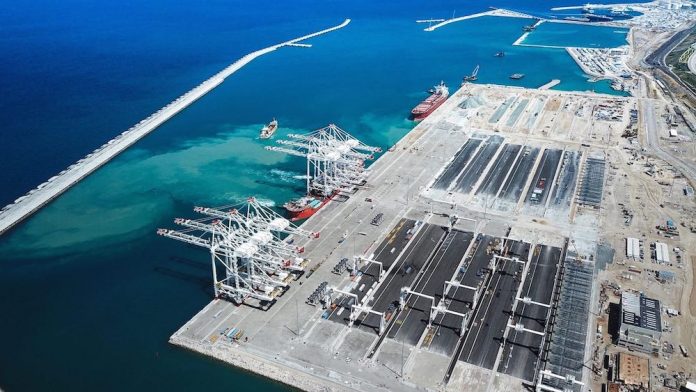Tanger Med Port is poised for a record-breaking year, as it anticipates handling more than its nominal capacity of nine million containers in 2024. This projection was shared by Rachid Houari, the port’s deputy general manager, in an interview with Reuters. Last year, Tanger Med cemented its status as the top port in the Mediterranean, processing 8.61 million TEU, a notable 13.4% increase compared to 2022. In the first quarter of this year alone, the port saw a remarkable 14.9% rise in tonnage, reaching 33.3 million metric tons, and revenue jumped by 18.3% to $1 billion.
“We have also seen a percentage increase in container traffic,” Houari mentioned to Reuters, noting that the exact figure would be confirmed at the year’s end. “Every terminal is currently operating slightly above its theoretical capacity, so I believe we will exceed nine million containers.”
Standing in his office overlooking an export terminal filled with Moroccan-made cars, Houari highlighted the productivity goals of the port. The TC1 terminal, managed by APM TT, processed 2.5 million TEU last year, surpassing its nominal capacity of 1.5 million TEU.
The port’s growth drivers include its strategic location at the Mediterranean entrance, connections with 180 ports worldwide, and partnerships with major shipping lines and terminal operators like Maersk, Hapag-Lloyd, and CMA CGM, Houari explained.
Tanger Med has also benefited from the diversion of container ships around Africa to avoid attacks by Iran-aligned Houthi militants in the Red Sea. However, containers passing through the Red Sea account for only 25% of the port’s traffic, with many ships still navigating the Suez Canal despite disruptions. The majority of the port’s traffic involves trade with Africa, Europe, and the Americas.
The port is supported by industrial zones that host 1,200 companies employing 110,000 people, generating $15 billion in exports last year, which constitutes 20% of Morocco’s total exports. There are plans to expand these industrial zones from 2,500 hectares to 5,000 hectares to attract more investors in high-value-added industries, Houari added.





